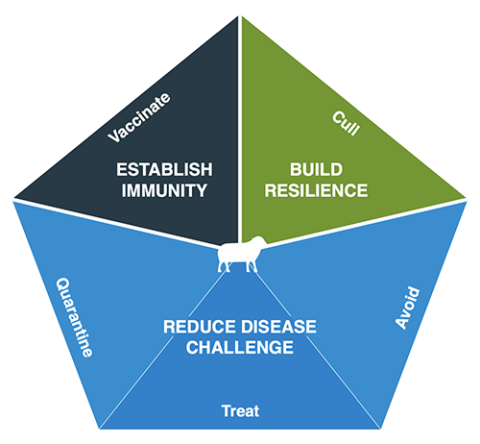What is the five-point plan?
The five-point management plan provides a clear strategy to control lameness on farm and is recommended where footrot, scald, and/or CODD, have been diagnosed as the cause of lameness.
By implementing all five points in the plan together, farmers can tackle the disease from all angles and give their flock the best chance of avoiding lameness problems.
What are the main benefits of using the five-point plan?
Successfully implementing the plan should result in three outcomes for the flock:
- Increased resilience to the diseases that cause lameness
- Reduced disease challenge on farm
- Improved immunity via vaccination
Steps 1 and 2: cull and quarantine
Mark sheep to cull and quarantine lame sheep. You’ll find information on identifying repeat offenders and quarantining to reduce the spread of disease.
The five-point plan: cull and quarantine
Step 3: treat
Disease spreads quickly, so it’s important to treat even mildly lame sheep as soon as possible. We’ve got plenty of advice on treatment methods, including using foot sprays to antibiotic injections.
Treating lameness cases in sheep
Step 4: avoid
Read about how to avoid spreading infection during handling, gathering and when the sheep are out in the field. You’ll also find information on housing, handling and breeding methods to help reduce the spread of infection.
Avoiding the spread of diseases that cause lameness
Step 5: vaccinate
Decide with your vet if and when, to vaccinate. Our advice takes you through the options and timings.
Using vaccinations to treat lameness
Useful links
Diseases that cause lameness in sheep



